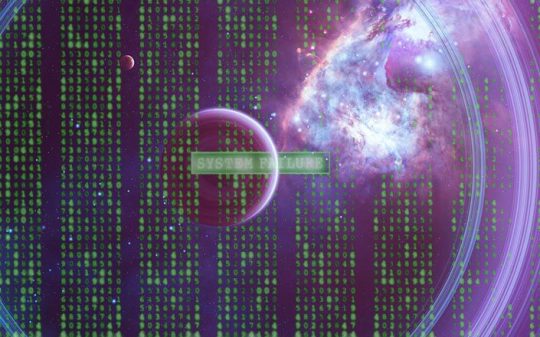It seems that every other week you end up reading a piece about how reality might actually be a simulation. This is one of those articles.
The human mind is inherently suspicious. If it weren’t, we probably wouldn’t have made it this far. Throughout history we can find multiple examples of doubt towards various aspects of reality. One of the best is Descartes’ Evil Demon concept, where he hypothesizes the existence of a powerful and misleading entity whose only purpose is to deceit in every way.
This ‘demon’ could present Descartes with a realistic and exhaustive illusion of the outside world, complete with other humans and their own minds. Everything would feel real, although it would be nothing more than a continuously-fed deception.
Descartes’ evil demon experiment was interesting but had no real basis or evidence, so it was regarded as a simple exercise, a quirk of one’s imagination. But then a new concept came along and breathed new life into a century-old idea. It’s called quantum realism and it builds on the same principle: that what we see isn’t real, but a masterful illusion. However, QR doesn’t attribute the illusion-generating powers to a demonic entity, but to something more mysterious and even harder to see—quantum mechanics.
Our everyday lives are governed by physical realism; you see something, you feel something, you know it’s going to respect the same physical rules as everything else. The laws of mechanics we all subjectively know through observation are inevitable—the apple always falls from the tree.
But when we start going down, towards the subatomic level, the weirdness starts. Welcome to the quantum world, where thing work differently. Particles exist in multiple places at the same time and keep popping in and out of existence.
[iframe id=”https://www.youtube.com/embed/tAIC-FkE2rs” mode=”normal” autoplay=”no”]
Our minds are used with physical realism, so the weirdness of the quantum world—where things are and aren’t at the same time—seems like an arcane wonderland. We can’t explain quantum physics through conventional, Newtonian physics and it seems counter-intuitive to assume that our straight, predictable and visible world can generate such a wacky one when we get really microscopic.
That is where the concept of quantum realism steps in.
According to QR, the quantum world is the real deal and the physical world we see is actually a virtual reality generated by the quantum domain. Sure, this sounds strange but the physical world subscribes to the quantum one and not the other way around. Furthermore, quantum mechanics can be successfully used to predict physical mechanics since the former generates the latter. To us, this would be the equivalent of Wonderland creating Alice.

The quantum world has multiple contradictions that make it quite hard to fit within the concept of physical realism. On the other hand, quantum realism states that the physical world’s laws and phenomena can only happen if the world is in fact a virtual reality. As strange as it may seem, many aspects of the physical world support this theory.
Chief among them is the fact that our universe even had a beginning. The Big Bang gave rise to everything and it also kickstarted time and space. So it would be impossible for the universe to exist before it had created itself, unless something or someone else created it. Scientists hypothesize that the first event during the Big Bang was a quantum fluctuation in the vacuum, and after that matter simply began popping into space. But where did space come from?
Quantum realism tackles this issue another way. It surmises that the Big Bang was actually a ‘boot sequence’ during which coordinates such as space and time (the operating system) were loaded. The Big Bang was a big START button.
Another thing that bothers is the constant value of the speed of light. Why’s it constant? Einstein said “the speed of light is constant because it just is, and because light is not made of anything simpler.” Thanks a lot, Einstein, but the question still remains.
In QR, if the world is VR, it has to be generated by the processing of information. And the speed of any informational process has to be finite and constant, leading some to suspect that the speed of light is actually our reality’s refresh rate. In other words, it’s the fasted speed supported by our ‘network.’ This goes to support conventional physics and the fact that no object that has mass can travel faster than light. That would simply require more energy than available in the entire universe. Weird, but it kind of makes sense, doesn’t it?


whose only purpose is to *deceive in every way.
the apple always falls from the tree.- except when it falls from your hands, or from an airplane, or out a window.
Fairly decent article on QR theory, despite that it reads like it was written by a 14 year old… kudos Agent 1.